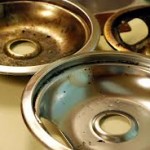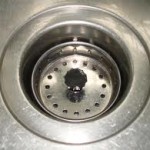How to Clean a Bamboo Cutting Board
Bamboo is excellent for a cutting board since it is a very sustainable resource. Bamboo grows up to 10cm per day depending on the species during the growing season.
Bamboo is a grass, and grow quickly. A mature bamboo plant takes less than 3-5 years to reach full size. Compare that to an oak tree which matures in about 25 years and can live up to 500 years. This makes bamboo a really fantastic choice for sustainability.

Classic cutting boards made from maple, walnut, cherry are just not as sustainable as bamboo. Also, bamboo continues to be more and more popular as manufacturing methods have made it easier to make it flat. Additionally, bamboo is very hard more so than most typical wood cutting boards, making them more maintenance free. Since bamboo is so hard, it is also resistant to knife marks etc. This is key as knife scarring on a typical cutting board allows for pockets and grooves for water or moisture to collect and reduces your ability to effectively sanitize the cutting board.
Bamboo resists water better so will not warp or crack as easily as a typical cutting board.
If you wipe immediately after use every time your bamboo cutting board will last for many years. In addition to wiping you can cut a lemon in half and run it across the surface for a natural way to clean and sanitize. Lemons are acidic and will break down organic material to a degree as well as counteract smells.
You can also set up a spray bottle with water and vinegar and use that as a spray cleaner (50% white vinegar and 50% water). The real key is quick clean up after use to prevent cross contamination and make clean up a breeze. I have also seen people use a 3% hydrogen peroxide as a spray cleaner as well. Always dry the board after cleaning, so the wood doesn’t asorb the water. No dishwasher or soaking the board.
If you feel you have to disinfect spraying the hydrogen peroxide onto the board and letting it sit for a few minutes then wiping dry is a good way to go as well. Even using a mild bleach solution (one part bleach nine part water, which is 1:10 solution). This is ¼ cup of bleach and 2 ¼ cups of water in a quart sized spray bottle. Pour the bleach into the bottle first carefully then add the water. Bleach loses its disinfectant power quickly through exposure to light and heat etc. so do not make large batches and replace often.
The key is quick clean up and limit the amount of time moisture is on your board. When possible wipe the board dry. If you have stubborn stains sprinkle, some baking soda on the board and wipe using a cloth and water.



